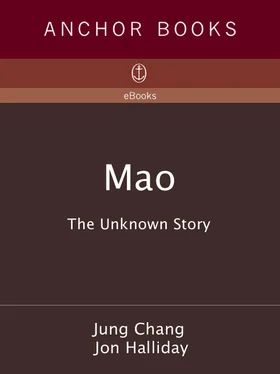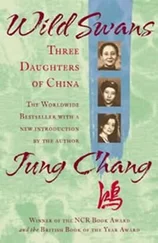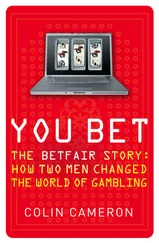Ruijin, 7 November 1931, the day the first Chinese Red state was founded, when Mao (second from right) became the “Chairman.” To his left Wang Jia-xiang; to his right: Xiang Ying, Deng Fa, military chief Zhu De, Ren Bi-shi and Gu Zuo-lin.(photo illustration 8)
The leadership of the Red state held its first formal meeting on 1 December 1931. Mao standing, back to camera. Zhu De to Mao’s right. The Red state collapsed in October 1934, when the Long March began.(photo illustration 9)
The bridge over the Dadu River at Luding, the site of the core myth about the Long March. Communist claims of fierce fighting here in 1935 were invented.(photo illustration 10)
Mao (standing, third from left, looking Oscar Wilde-ish), in his post — Long March HQ, Yenan, September 1937, with some of the participants in the “Autumn Harvest Uprising” of 1927, the founding moment of the myth of Mao as a peasant leader. His third wife, Gui-yuan, is standing far right.(photo illustration 11)
Mao (seated, second from left), with Red Army officers, including Zhu De (seated, third from left) and Mao’s closest crony, Lin Biao (seated, fourth from left), Yenan, 1937.(photo illustration 12)
The four moles who helped doom the Nationalists. Shao Li-tzu (right) delivered Chiang Kai-shek’s son to Moscow in 1925 to be Stalin’s hostage for over a decade. To get his son back, Chiang let the Reds survive during the Long March.(photo illustration 13)
Gen. Zhang Zhi-zhong (above) triggered off all-out war with Japan in 1937, diverting the Japanese into the heartland of China and away from Russia.(photo illustration 14)
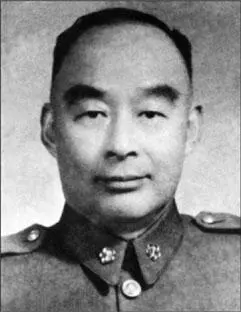
Gen. Hu Tsung-nan (below) offered up Nationalist forces en masse to Mao to be wiped out in 1947–48. “Hundred Victories”(photo illustration 15)

Gen. Wei Li-huang (below right, center), photographed for Life magazine, delivered over half a million of Chiang’s best troops and Manchuria to Mao in 1948.(photo illustration 16)
Generalissimo Chiang Kai-shek (front right) with Chang Hsueh-liang (“the Young Marshal”), the former warlord of Manchuria, who kidnapped Chiang at Xian in December 1936. The kidnap, which was co-ordinated with Mao, dealt the marginalized Reds back into the game.(photo illustration 17)
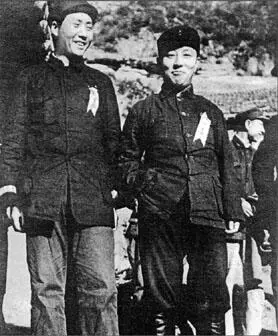
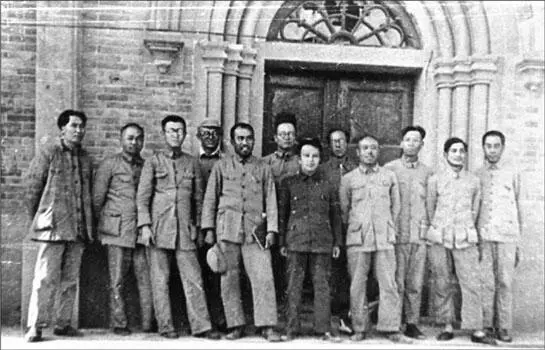
Mao’s main Party rivals. Chang Kuo-tao (above left) with Mao in Yenan, 1937. Mao sabotaged Chang’s much larger army on the Long March; he then sent half the remainder to its doom in the Northwest desert, finally burying the survivors alive. Chang fled the Reds in 1938. Wang Ming (above right) with Mao shortly after arriving in Yenan from Moscow in late 1937, bringing Stalin’s orders for the CCP to fight Japan. Mao, who welcomed the Japanese invasion as a way to destroy Chiang Kai-shek, felt threatened by Wang Ming, and had him poisoned. Mao was in the minority in the Politburo over his “don’t fight Japan” policy, but reversed his political fortunes by scheming in autumn 1938, when the Politburo gathered in Yenan, here seen (below) in front of the Spanish Franciscan cathedral. From left: Mao, Peng De-huai, Wang Jia-xiang, Lo Fu, Zhu De, Po Ku (who tried to leave Mao behind on the Long March), Wang Ming, Kang Sheng, Xiang Ying, Liu Shao-chi, Chen Yun, Chou En-lai.(photo illustration 18)
January 1937: Red Army troops entering Yenan, which became Mao’s home for a decade.(photo illustration 20)
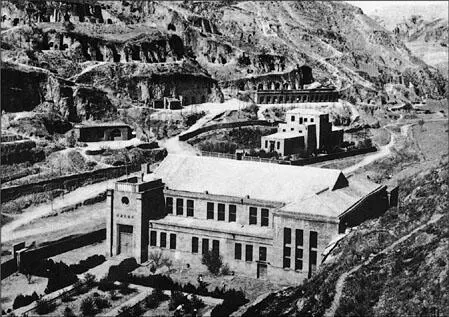
Yenan: the building constructed specially for the Party congress that enthroned Mao in 1945. Cave dwellings visible in the background, dug into the soft loess hills.(photo illustration 21)
The Spanish Franciscan cathedral of Our Lady of Begoña in Yenan. Completed in 1935, it was seized by the local Red leader, Liu Chih-tan, whom Mao soon eliminated. The site of many key Party meetings, including the one which reversed Mao’s fortunes.(photo illustration 22)
Jung Chang, outside Mao’s official Yenan residence, interviewing a local farmer whose mother used to do Mao’s laundry.(photo illustration 23)
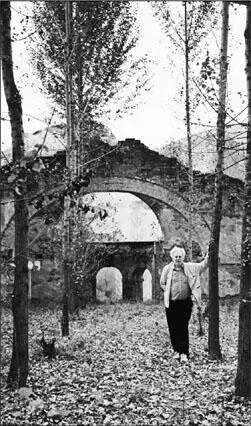
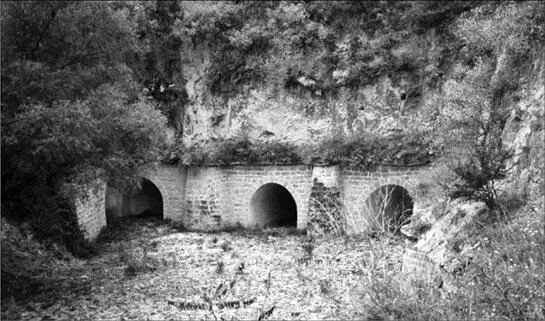
Jon Halliday at the ruins of a churchlike edifice specially built in a remote valley outside Yenan for Party meetings; it was never used, as Mao had a secret residence next door and wanted to keep the place to himself. This secret compound (below) is unknown to this day. Mao lived in the “cave” to the right, with tunnels through the hills. The entrance was covered, and even had a sun awning. The only neighbors were several thousand well-guarded prisoners.(photo illustration 24)
Mao with his third wife, Gui-yuan, in Yenan, 1937. She soon left him and went to Russia. She lived the rest of her life in and out of mental breakdowns.(photo illustration 26)
Mao’s two surviving sons at the special school for children of foreign Communist leaders at Ivanovo, outside Moscow. An-ying, the eldest son, is the tall boy in the middle row, center. The banner above the portrait of Mao reads: “Long live the Communist International — the Organiser of the Struggle for the Victory of the Workers!”(photo illustration 27)
Mao posing outside one of his residences in 1939 reading Stalin for a documentary by Stalin’s favorite film-maker, Roman Karmen, who duly reported back on Mao’s “devotion.”(photo illustration 28)
A receipt signed by Mao for US$300,000 (worth about US$4 million in 2005) received from a Russian called Mikhailov, dated 28 April 1938.(photo illustration 29)
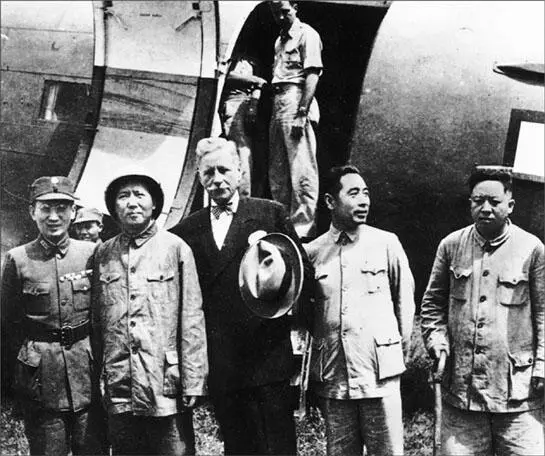
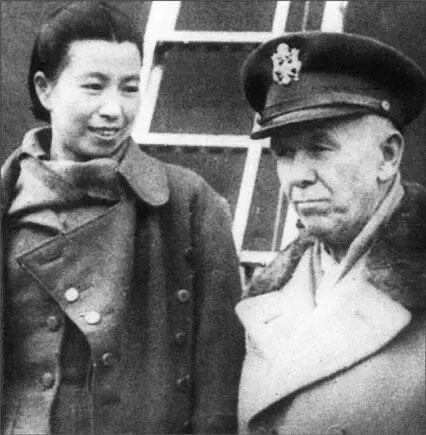
In August 1945, when Japan surrendered, Stalin told Mao to go to Chongqing to play the negotiating game with Chiang Kai-shek. (Above) Mao in topee on arrival at Chongqing, with U.S. Ambassador Patrick Hurley (center). Chou Enlai to right of Hurley. When the civil war heated up, and Mao was on the verge of defeat, he was saved, unwittingly, by America’s mediator, General George C. Marshall. (Left) Marshall was seen off from Yenan on 5 March 1946 by Mao’s fourth wife, Jiang Qing, the later notorious “Mme Mao,” on her first outing as would-be “First Lady.”(photo illustration 30)
A downcast Chiang Kai-shek visiting his ancestral temple for the last time before leaving Mainland China in 1949, with his son and heir, Ching-kuo (to left in hat).(photo illustration 32)
Red troops entering Nanjing to a conspicuously cool welcome. The Communists later filmed reconstructions of the takeover of cities and showed them as if they were real events.(photo illustration 33)
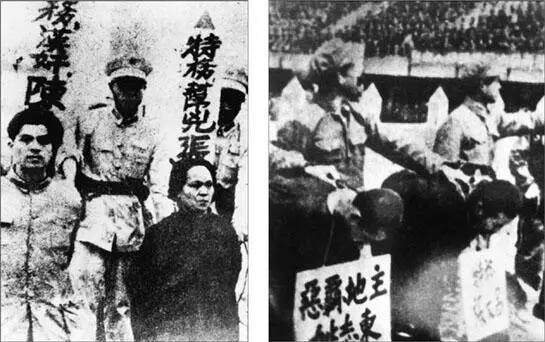
(Above) Mao proclaiming the founding of Communist China from the top of Tiananmen Gate, 1 October 1949. His first political campaign centered on mass executions, in front of organized crowds (below). “Only when this thing is properly done can our power be secure,” Mao pronounced. The people being exhibited carry plaques announcing that they are “landlords” and “spies.”(photo illustration 34)
Читать дальше
